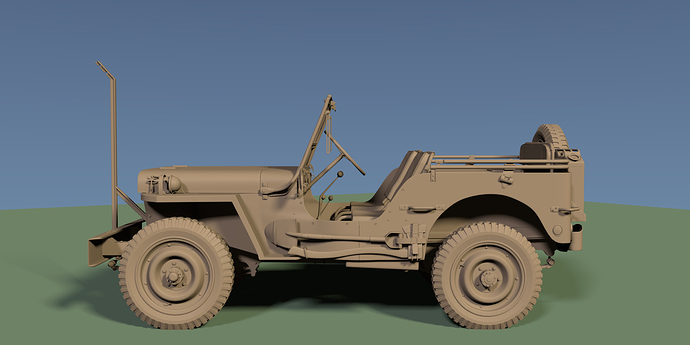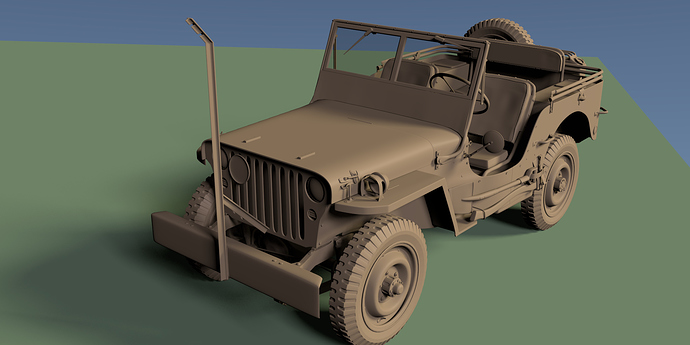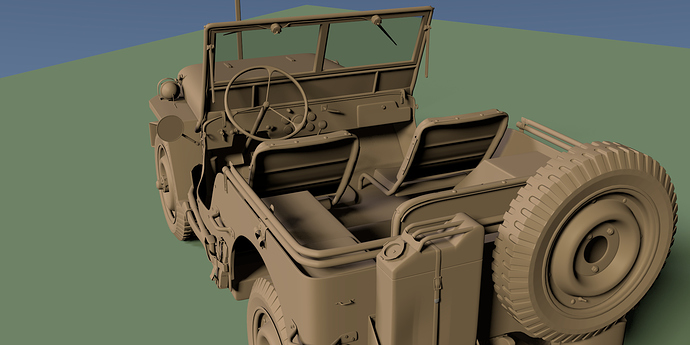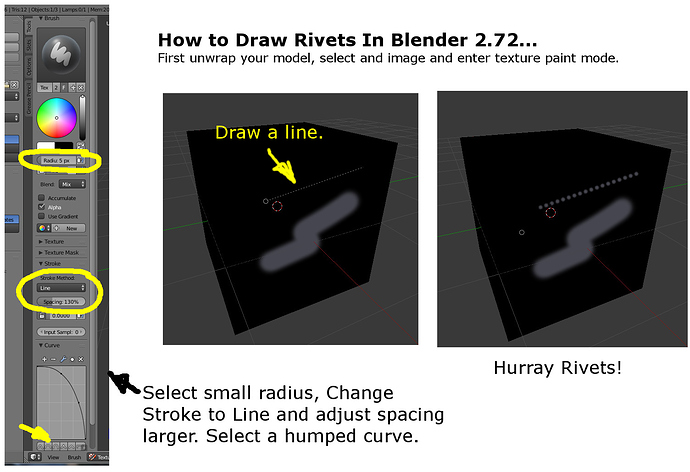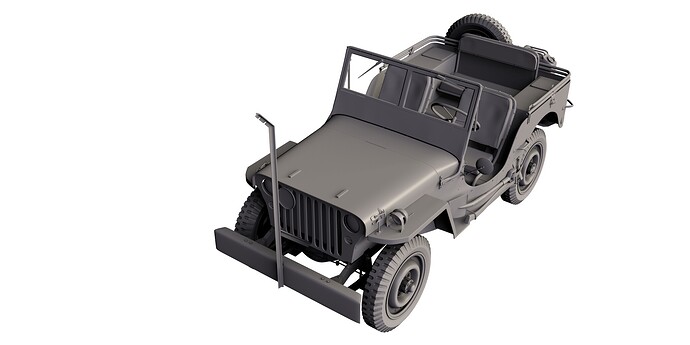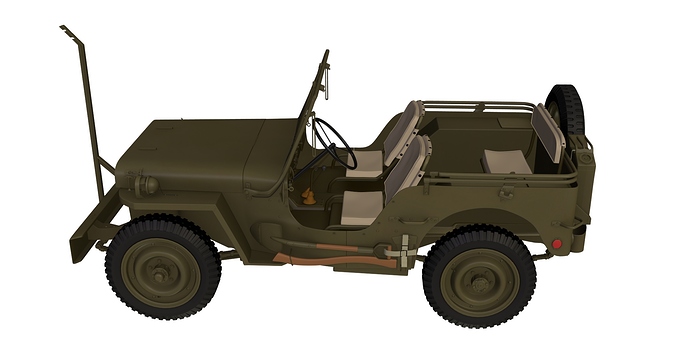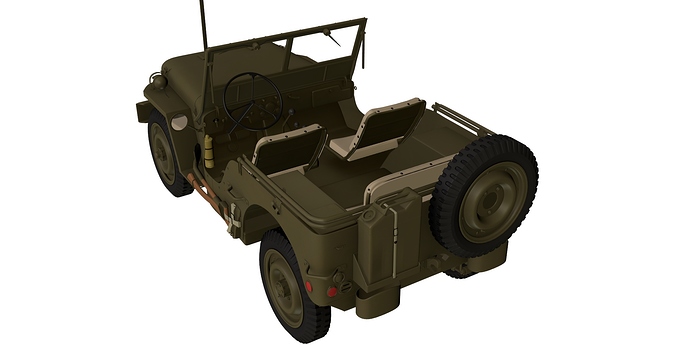I’ve combined the AO maps with the very basic texture colors that I’ll use as the base. Yes, I know, the colors are not realistic but that’s because they are just place holders for now. However, the colors are taken from WWII jeep reference photographs. There were lighter olive drab paints, some jeeps were painted in “forest green,” some olive drabs were more of a brownish green. These differences were due to the lack of a standard for paints and Ford and Willys used whatever paint was available that came close to what the government wanted.
The same goes for the seat covers. They too had a wide range of colors depending on exposure to the weather. I think these seat covers probably need to be a bit greener, but I’ll fix that in Cycles.
When manufactured, the Jeep was painted almost completely olive drab. There were very few other colors: the seats, wires and rubber tubing, tires, reflectors, etc. Here I show the wood on the shovel and axe. Some jeeps were delivered with the wood varnished and some delivered with the wood painted olive drab. Just for some contrast, I chose to show the wood as varnished.
The color of the leather boot for the gear shifts ranged from a very light tan to a rich dark brown that was “roughed” meaning that it wasn’t smooth leather.
So far, all the modeling, UV maps, AO baking, and base colors have been done in Blender Render. It’s just easier for me to do all the basic in BR/BI. The next step is to switch to Cycles and begin the detailed texturing, lighting, and the background for the final scene–which will be in an urban setting with rubble from the war/combat.
Suggestions on improving are welcomed. If any Jeep experts see a problem, let me know. On the other hand, I’ve yet to see the same configuration of a jeep in two reference photos.
As I said earlier, I had never modeled a vehicle and so I wanted to start with a simple subject. The Jeep was angular and simple in its appearance, but it turned out to be difficult–at least for me–to model. If I were to start over, I would like to model it in much greater detail including the details on the frame, engine, transmission, wiring, etc. The visible screws, nuts, and bolts are about 98% accurate. There are a couple of bolts under the front fenders that I missed. I’ll see about adding them in Cycles.
This model is about 95% accurate. I tried to be as accurate as possible, but I could not find official blueprints and so this is a composite of many references. I did do my best to represent a Willys Jeep circa 1943. But after I finished modeling and doing more research, I realized that I have included a couple of details that were only on the Ford manufactured version of the Jeep. Oh well, live and learn.
BTW, the lighting looks strange because I turn off shadows when I’m modeling so I get a cleaner look at the meshes and I forgot to turn shadows back on before rendering the images.
Attachments


